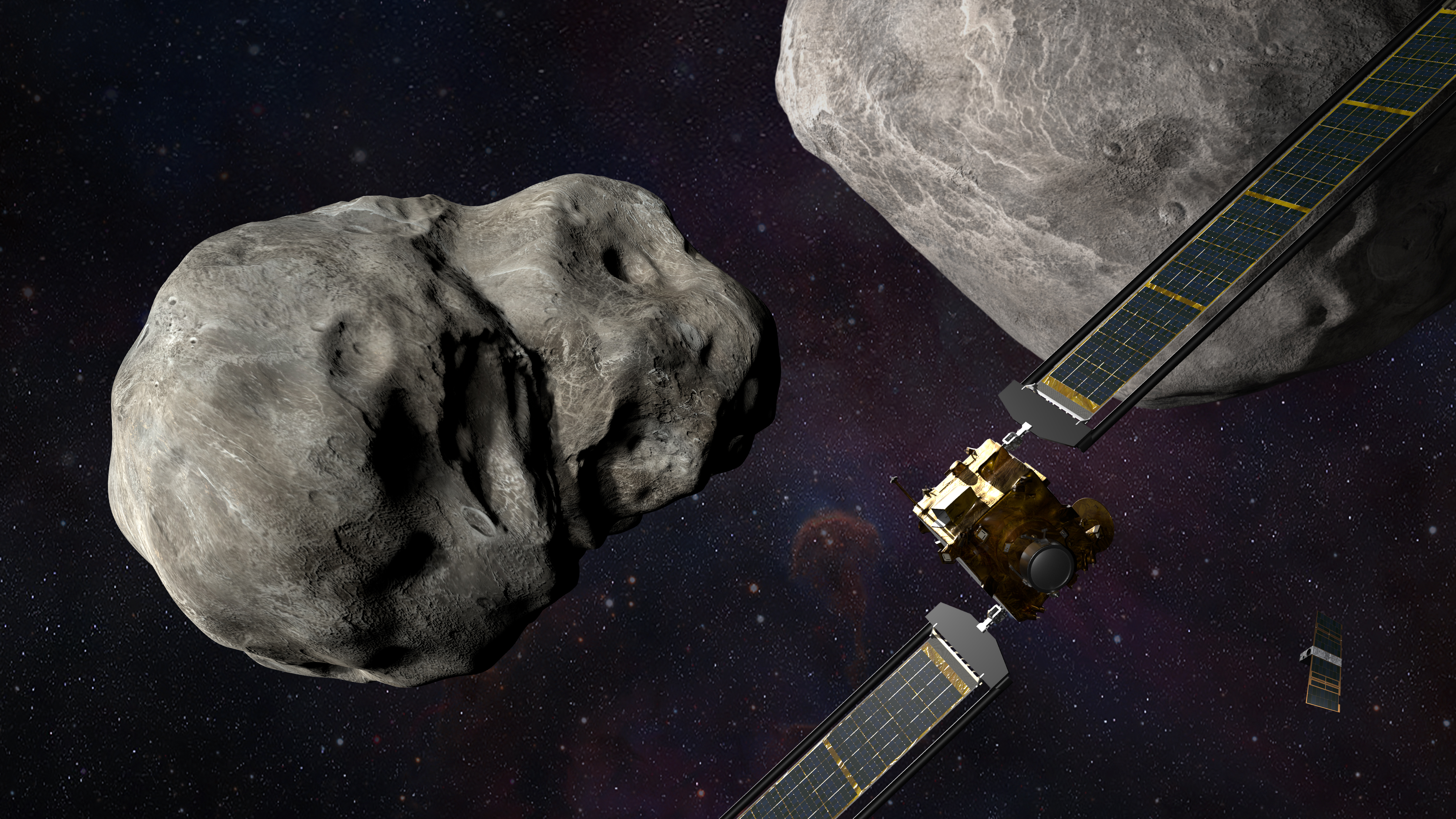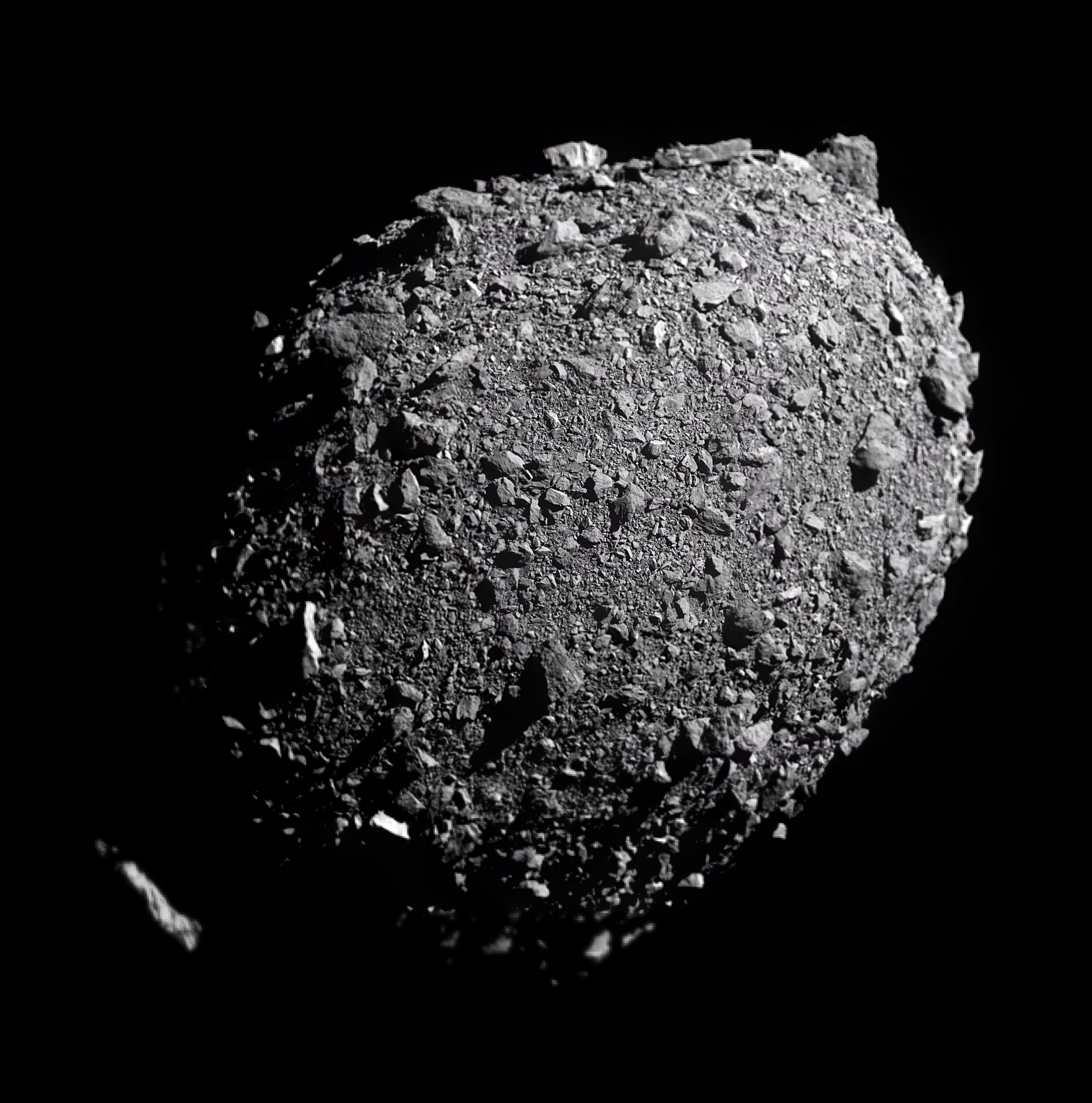Double Asteroid Redirection Test (DART) was a spacecraft that intentionally was made to collide with an asteroid, thus changing the asteroid’s path through space. DART’s target asteroid did not pose a threat to Earth. Scientists planned the mission as a test, to find out whether a spacecraft collision could change an asteroid’s path. In the future, this method could be used to redirect a threatening asteroid away from Earth.

DART was a type of spacecraft called an impactor. An impactor smashes into the target it is studying, such as a planet, moon, or asteroid. Usually, scientists study the effects of the impact to learn about the physical characteristics of the target. Because DART was designed to move its target, it is considered a kinetic impactor.
DART traveled to Didymos, an asteroid that is about ½ mile (780 meters) wide. Didymos has a moonlet—a second, tiny asteroid in orbit around it—called Dimorphos. Dimorphos is sometimes nicknamed “Didymoon.” Dimorphos is 525 feet (160 meters) wide. Pairs of asteroids such as this one are known as binary systems. Scientists think about 15 percent of the asteroids closest to Earth are part of a binary system. Didymos and Dimorphos were chosen for the DART mission because their position is practical for a spacecraft to reach and because changes to Dimorphos’s orbit can be measured from Earth. 
On Sept. 26, 2022, DART smashed into Dimorphos at a speed of 4.1 miles (6.6 kilometers) per second. Telescopes on Earth observed a bright flash at the moment of impact. Before the impact, Dimorphos orbited Didymos once every 11 hours 55 minutes. The impact successfully shortened this period to 11 hours 23 minutes.
DART carried only one instrument, a camera. The camera helped it steer automatically toward its target. DART also carried a shoebox-sized spacecraft called LICIACube. DART released LICIACube before it impacted Dimorphos. LICIACube photographed the impact test and its aftermath.
The National Aeronautics and Space Administration (NASA) launched DART on Nov. 24, 2021. The mission was sponsored by NASA’s Planetary Defense Coordination Office. The Italian Space Agency (ASI) built LICIACube, which is Italy’s first deep space probe.
The European Space Agency (ESA) plans to launch a new mission to follow up on the DART mission. The follow-up mission, called Hera, is scheduled to approach Didymos in 2026. Hera will thoroughly examine both Didymos and Dimorphos to help scientists understand the effects of the impact test.
See also Space exploration (Asteroids).
